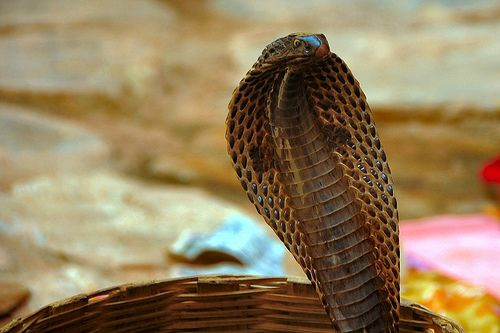Widely Used Antivenom In India Is Actually Not That Effective

The toll taken by snakebites among Indians every year is horrendous. Conservative estimates say 81,000 people are bitten every year, resulting in 11,000 fatalities. Some even place the death toll as high as 50,000 annually. Whatever the true figure, this ghastly result makes India the country most heavily ravaged by snakebites in the world.
There are more than 270 species of snakes in India. Of this number, about 60 are highly venomous. Among the most dangerous snakes in India are the Malayan Pit Viper, Banded Krait, Indian Cobra, Russell's Viper and Saw-scaled Viper. Of these species, the "Big Four" most dangerous snakes are the Indian Cobra, Krait, Russell's Viper and Saw-scaled Viper.
The reasons for the unacceptably high mortality range from delayed or non-arrival of victims at health centers within the vital six hours to a shortage of antivenom and inadequate care at health center. Now, it seems a new reason has been added: the antivenom most commonly used to treat snakebites is said to be not that effective against the Big Four.
In India, the gold-standard treatment is an antivenom against the combined venom of the Big Four. This critical treatment routinely saves lives and continues to do so. But a new study published early December in PLOS Neglected Tropical Diseases reveals this gold-standard antivenom comes up short against the venoms of other Indian snakes whose bites are equally deadly.
Kartik Sunagar, co-author of the study and an evolutionary biologist at the Indian Institute of Science in Bangalore, said that instead of relying mostly on the gold-standard treatment, what's needed are region-specific antivenoms. Sunagar and his team found the most widely marketed antivenom failed against venoms from both populations of the monocled cobra, the Sind krait and northern populations of the common krait.
He pointed out the venom of the same species can vary among different geographical populations. Snake species are distributed widely across India. Sunagar and his team found the venom of one monocled cobra population targets the nervous system. On the other hand, another population's venom is rich in toxins that cause cell and tissue damage. "The venoms of local, medically relevant snakes must be used to produce antivenoms that will work more effectively in that region," Sunagar said.
He added more government funding and attention will do a lot to help solve this problem. Sunagar and his colleagues are now working with antivenom manufacturers to develop and test region-specific antivenoms. He also cited studies showing snake species' venom compositions differ dramatically.
"We treat snakebites as one medical emergency," Nick Casewell, who works on animal venoms at the Liverpool School of Tropical Medicine in England, said. "But the reality is, if you're bitten by a snake like a cobra, then you might suffer neurotoxic effects that lead to respiratory paralysis, (and) if you're bitten by the Russell's viper, you may have a completely different variety of syndromes such as hemorrhage or bleeding disorders."
Several efforts are underway worldwide to upgrade existing snakebite treatments and discover novel therapies. Sunagar, Casewell and scientists from Kenya and Nigeria are part of a consortium seeking to develop a new type of antivenom to counteract venoms from Africa and India.
The consortium's aim is to design treatments specifically targeting the toxins in venom. This cocktail of select antibodies will likely also be safer for patients.
Only 15 percent of antibodies in an antivenom are specific to toxins, according to Casewell. The rest are directed toward parasites or germs in the snake's environment.
Instead of just collecting antibodies from the animals' blood, Casewell and his colleagues will gather the cells that produce them and grow these in the lab. They will then use these cells to generate a synthetic "library" of antibodies.
"We can then choose just those few antibodies that neutralize lots of different toxins and use that as a treatment moving forward," he added.



























